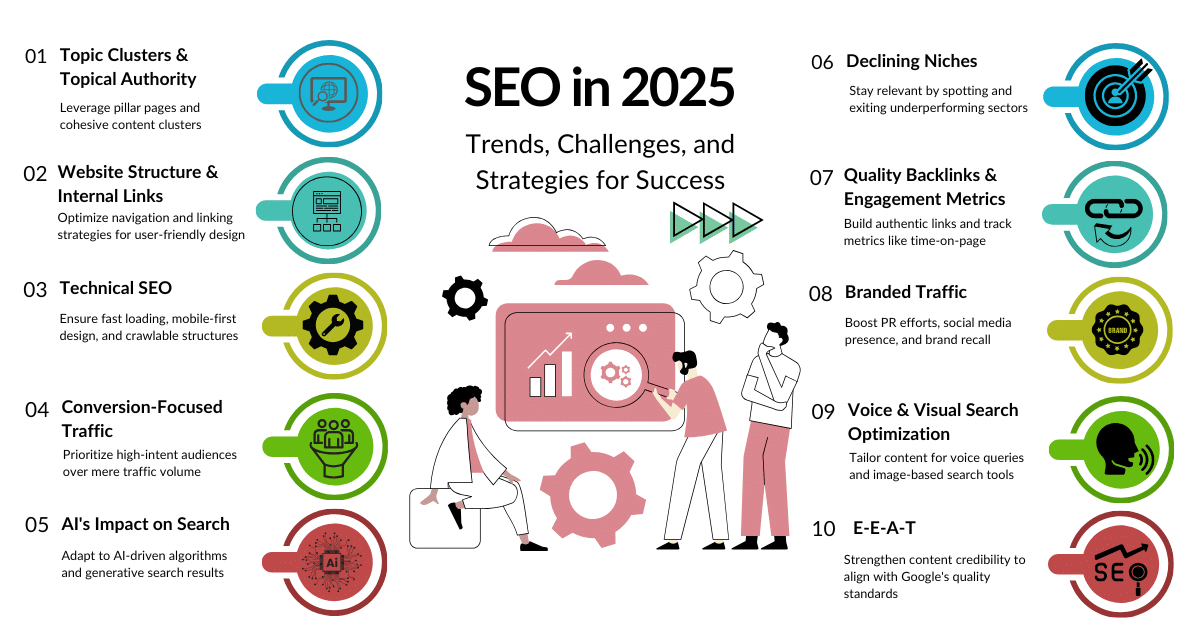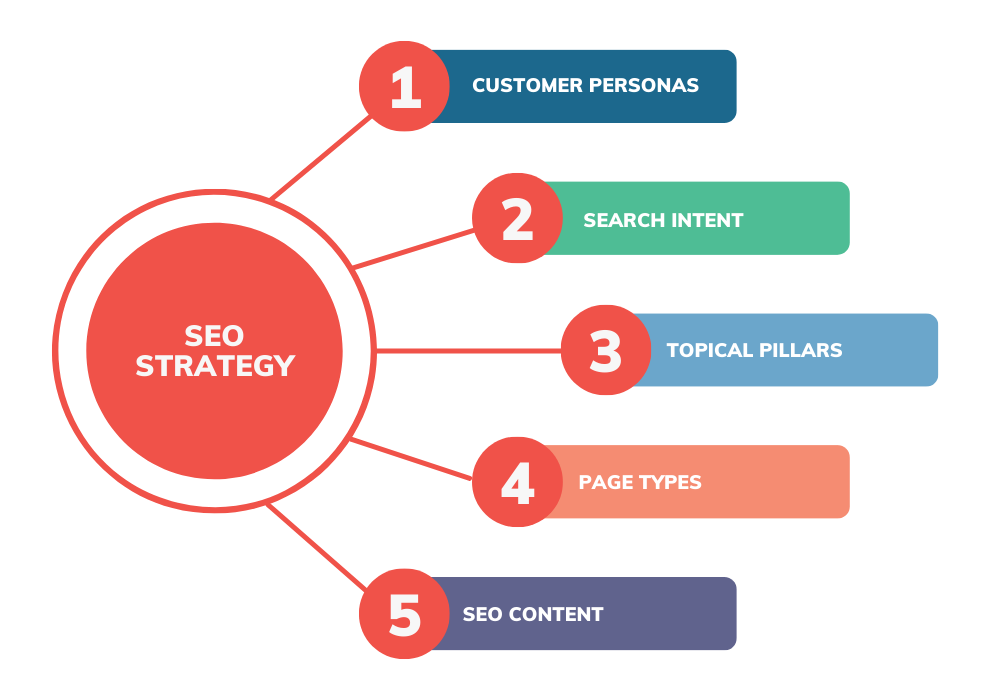Starting a new website is an exciting venture, but simply launching it is not enough. To ensure that your website attracts traffic, generates leads, and builds authority, it must be optimized for search engines. This comprehensive SEO strategy guide is designed to help new website owners understand the crucial steps involved in making their website visible on Google, reaching the right audience, and creating lasting brand authority.
1. Keyword Research: The Most Important Part of SEO
The most important part of SEO is doing keyword research before you write anything. Knowing what your target audience is looking for will guide the structure and tone of your website’s content. For free research, you can use tools like Ubersuggest, AnswerThePublic, and Google Keyword Planner. For more sophisticated insights, you can pay for programs like KWFinder, Ahrefs, and SEMrush.
Tip: Use long-tail keywords like “affordable SEO services in Dhaka” or “how to speed up WordPress sites.” These usually have fewer competitors and are better at reaching your target audience.
2. Setting Up Technical SEO: Getting Things Started
Technical SEO is what makes a website simple to find on Google. You need to take care of the following things so that Google can crawl and index your site:
- Set up an SSL certificate: Switching to HTTPS will make your site safer.
- Mobile Responsiveness: Make sure your website works well on mobile devices since most people today use smartphones to access the internet.
- Site Speed: For a better user experience and higher rankings, your website should load in less than three seconds.
- XML Sitemap with Robots.txt: You should send your sitemap to Google Search Console and make a robots.txt file to help search engine crawlers find their way.
- Canonical Tags: Use canonical tags when you need to prevent problems with duplicating content.
3. On-Page SEO: Making Each Page Better
On-page SEO sets up your website to talk to both Google and your visitors in a way that works well once the technical parts are taken care of. You should make sure that each page is optimized using the following:
- Title Tags: Make sure your title tag has the primary keyword in it and is between 50 and 60 characters long.
- Meta Descriptions: This 150–160 character description should make people want to click by adding relevant keywords and a call to action.
- Headings (H1–H6): Use the right header structure to make it easy to read. The primary keyword should be in your H1.
- Image Alt Text: Make sure that every picture on your website contains meaningful alt tags that contain keywords.
- Internal Linking: Linking to related pages on your website can improve both the structure of your site and your visitors’ experience.
- URLs that are good for SEO: Use short, descriptive, and keyword-rich URLs like /seo-strategy-guide.
4. Optimizing Content: More Quality Than Quantity
SEO is all about content. It’s important to create content that both search engines and people like. Here are some ways to improve your material:
- Write Comprehensive Articles: For important themes, try to write between 800 and 1,500 words. Give all the important information and make it useful.
- Keyword Density: Use your target keywords in a way that seems natural. Try to keep the keyword density between 0.5% and 1%. Don’t stuff too much.
- Use Structured Data: Use headers (H2, H3), bullet points, and numbered lists to break up your text into parts that are easier to read.
- Add Media: Make your material seem appealing by using pictures, videos, and infographics.
5. Local SEO: Getting Traffic from Your Area
Local SEO is essential for firms that want to reach people in their area.
- Google My Business: Claim your Google My Business listing and check it.
- NAP Consistency: Make sure that your Name, Address, and Phone Number (NAP) are the same on all platforms, including local directories.
- Use location-based keywords: Use location-based keywords like “best plumber in Dhaka” or “SEO services in Mymensingh” to get people from your area to visit your site.
6. Off-Page SEO: Gaining Authority
Backlinks and mentions are two ways that off-page SEO may help your website become more trustworthy and authoritative.
- Backlinking: To get backlinks from important websites in your field, provide useful material, write guest articles, and take part in debates that are relevant to your field.
- Social Media Engagement: Post your material on social media sites to get more people to see it and get natural backlinks.
- Press Releases: Use press releases to provide significant news about your company and receive coverage in the right media.
7. Schema Markup: Putting Structured Data in Place
Schema markup is a very useful technique that makes it easier for search engines to read your websites. It gives search engines more information, which may lead to rich snippets and greater exposure in search results.
- Use structured data: Use schema types such as articles, local businesses, products, and FAQs for the content on your website.
- Google’s Structured Data Testing Tool: This tool allows you to verify the correctness of your schema setup.
8. Tracking and Analytics: How to Know If You’re Doing Well
SEO is not something you do once and then forget about. Keep an eye on how well your website is doing and change your plan as needed.
- Google Analytics: Use Google Analytics to keep track of important data like traffic, bounce rates, session lengths, and more.
- Google Search Console: Use it to monitor your site’s performance, address indexing issues, and monitor your keyword ranks.
- Keep an Eye on Conversions: Set up goals in Google Analytics to track your website’s conversions, which might include form submissions, sales, or other important activities.
Conclusion: Patience Pays Off
SEO is a long-term commitment. While you might not see instant results, applying these strategies consistently will start showing positive results within a few months. Focus on building trust with your audience and search engines, and you’ll see your rankings rise.
Need help improving the SEO of your new website? Explore our expert SEO services or contact us for a free consultation.




